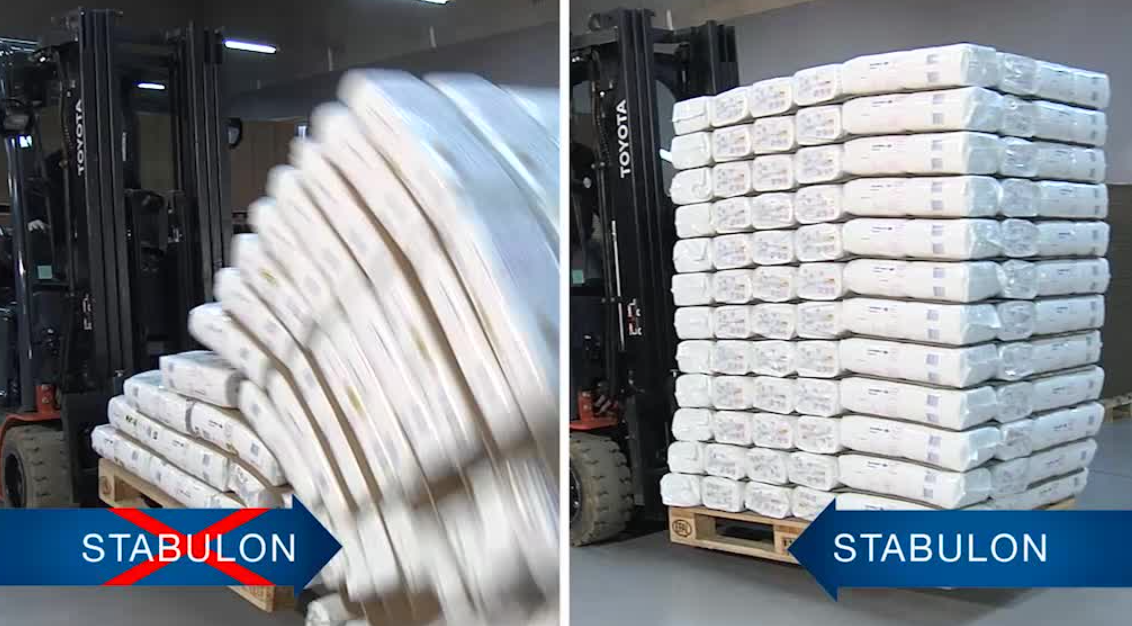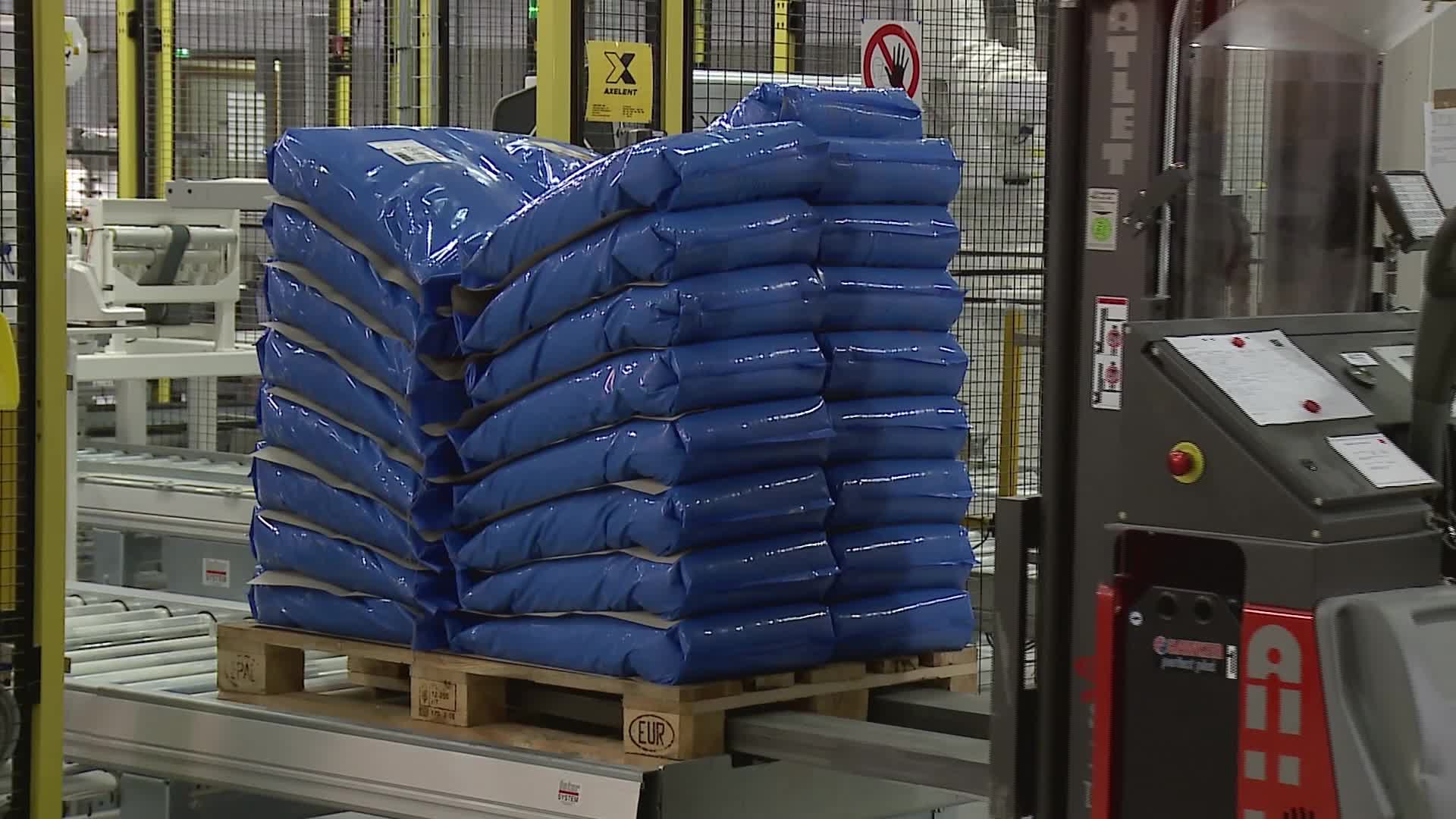Stabilising industrial plastic bags on a pallet can be complex. So how can they be stored and transported safely?

Large and medium capacity plastic bags and barrier laminate bags are effective packaging solutions. They are especially suitable for powdery or small particle-sized products.But all these industrial bags or bags intended for the end consumer have a WEAKNESS: THEY SLIP!Fortunately, there are several techniques for stabilising industrial plastic bags effectively.
1 – WHY DO YOUR PLASTIC BAGS SLIP?
► The bag is made of a slippery material
Bag made of a slippery plastic, migration of slippery additives, lamination with slippery films such as PVC, PP, use of slippery varnish.
►Thebag contains air or gas
On the bagging lines the air mixes with your product. Without perforations that allow the air to escape, it remains trapped inside the bag when it is closed. In this case, the bag forms a balloon, and it becomes very difficult to stabilise it.
►Palletised bags are stacked in an anarchic manner
This phenomenon is all the more significant if palletising is manual. When the palletising pattern is criss-crossed, then the excess thicknesses create instability
2 – WHAT ARE THE DIFFERENT MEANS OF STABILISATION FOR INDUSTRIAL PLASTIC BAGS :
► Making a bag with an anti-slip raw material.
There are several methods for making a plastic material non-slip.Firstly, by using additives in the composition of the film. Or by applying a varnish at the printing stage.
Unfortunately, these costly methods do not always achieve sufficient results to modify the behaviour of the bag on the pallet. And above all, a bag with anti-slip properties is very difficult to palletise on a high-speed automatic line.
►Apalletising glue application system
Palletising glue application systems can be applied to this type of packaging. However, it will be necessary to check:- the type of glue to be used and its compatibility with the bag material.- the suitability of the glue for contact with foodstuffs for use on food packaging lines.- the palletising rate available to absorb the drying time of the glue.- the configuration of the palletising line and the possibility of adding a glue application system to the products.- the ability to find sufficient space for the glue application system.the ability to find a large enough space for the glue storage, preparation and/or heating system.Finally, your willingness to introduce new equipment that will need to be purchased or hired.As well as the additional management of chemicals in your workshop that will need to be added to your HACCP audits.
►Non-slip pallet dividers
This phenomenon is all the more important if palletising is manual. When the palletising pattern is criss-crossed, then the excess thicknesses create instability

The use of interlayers not only solves the problem of slippage, but also ensures that the layers of bags are held together. It is no longer necessary to cross the layers at each level.Depending on the configuration, it may even be possible to create a column pallet.In most cases, it will be possible to stabilise the pallet and increase the number of layers.This will optimise the palletisation of plastic bags.The palletised bags will remain in place even after the pallet has been unpacked.You guarantee that the bags will remain on the pallet until the product has been consumed.
3 – PALLETISING GLUE FOR BAGS VS. HOW DO THEY COMPARE?
To compare solutions properly, you need to study all the advantages and disadvantages of the different solutions. CGP COATING INNOVATION, a specialist in non-slip coatings, offers innovative packaging solutions that address the instability of all types of bag packaging.
Find a solution for all your types of BAGS packaging.
Our range of LOGISTIC anti-slip interleaves, in reels or formats, provides innovative packaging solutions for all your configurations. Our STABULON® anti-slip interleave format is inserted between rows of bags on the pallet. STABULON®’s high coefficient of friction prevents products from slipping. Our STABULON® anti-slip pad format is inserted on the bottom of the pallet and between the layers. This innovative packaging solution provides a solution to the problems of packaging your products in plastic BAGS:
- Increase the height of your pallets.
- Stabilise a columnar palletising scheme.
- Preserve the integrity of your bag as a means of communication.
- Guarantee impeccable palletisation after the pallet has been opened.
- Secure your pallets after opening.
- No risk of the bag being ripped off.
- Reusable.
- Immediately effective, unlike glue.
- Standard coating effective on all materials, unlike glue.
Contact our experts for more details.
Stabilise and secure
